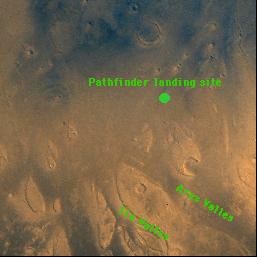This image shows the landing site for the Mars Pathfinder mission.
Click on image for full size
Image from: NASA/JPL
Ares Vallis
Mars Pathfinder touched down in what appeared to be the remnants of a catastrophic flood. Thus, scientists had the opportunity to study the remains of what is thought to be a surface created by flowing water.
A map of the region, shown here, shows what are called the Ares and Tiu outflow valleys. (An outflow valley is one form of channel created by a catastrophic flood). Ares is the Greek name of the god of War, also called Mars by the Romans. Read about the god Ares below). These are to be found on the north-eastern edge of Xanthe Terra (check the large topographic map of Mars). Channels are visible throughout the scene, and may indicate a great deal of drainage in the region. The two main channels seem to b
e examples of "straight" channels, rather than meandering river channels. This may mean that during the flood, the water came gushing directly out of the ground. The image also shows many tear-dropped shaped tails around craters in the area, indicating the possibility of much fluvial activity in the past.
On the web page linked in at the bottom of this page one may create one's own map of the region and see the relationship of the Mars Pathfinder landing site to Xanthe Terra, and its outflow channels. Connecting to this web-site is recommended. Once linked, a map is shown which shows the Mars Pathfinder landing site. Click on the landing site location and create your own map. Then use the (-) button to zoom out and view the landing site from a greater distance. Use of this site will demonstrate that the landing site was selected as a potential depositional plain.
You might also be interested in:
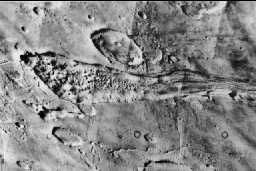
The Martian surface exhibits a large number of large, tear-drop shaped outflow channels such as the one shown in this image. Most of these are found on the slopes of the Martian volcanoes. They seem to
...more
The Mars Pathfinder was launched in December 1996 aboard a Delta II rocket. The spacecraft entered the Martian atmosphere on July 4th, 1997 with a Viking-derived heat shield and landed with the help of
...more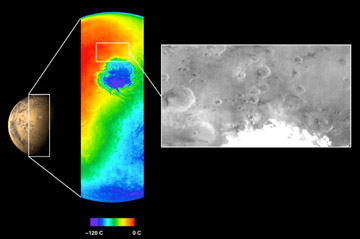
The Mars Odyssey was launched April 7, 2001, from Cape Canaveral Air Force Station in Florida. After a six-month, 285 million-mile journey, the Odyssey arrived at Mars on October 24, 2001 (02:30 Universal
...more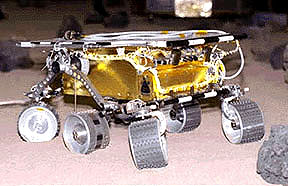
The Mars 2005 mission is still in the planning stages. It is set to launch in the year 2005.
...more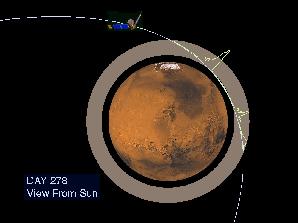
On September 12, 1997, the Mars Global Surveyor successfully entered a highly elliptical orbit around Mars. To get into the near-circular, near-polar, low-altitude orbit necessary to map the surface of
...more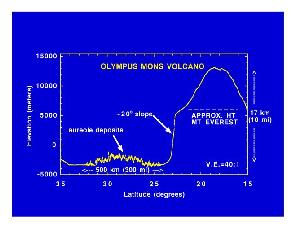
Mars Global Surveyor carries an instrument which measures the altitudes of things. The instrument is called an altimeter, or "altitude-meter". The graph to the left shows the results returned from Mars
...more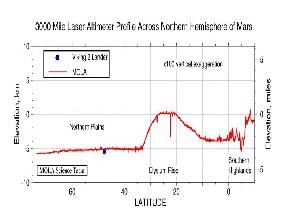
Mars Global Surveyor carries an instrument which measures the altitudes of things. The instrument is called an altimeter, or "altitude-meter". The graph to the left shows Mars Global Surveyor's measurement
...more


